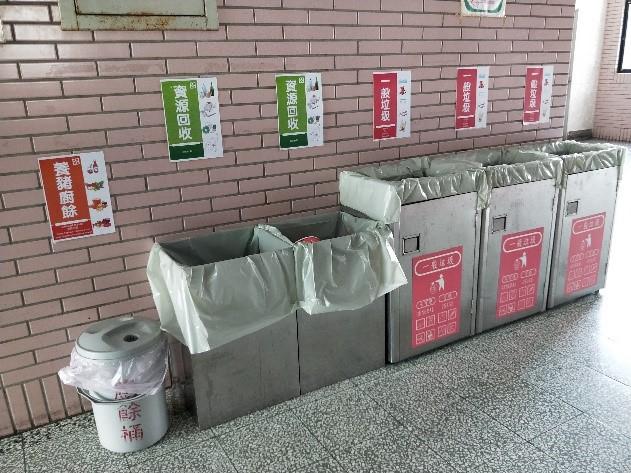
Currently, multiple recycling bins and food waste bins have been placed in appropriate locations in each building on campus; FJCU also established an on-campus recycling and treatment site to appropriately dispose of food waste and recyclable waste produced by students, faculty, and staff.
To reduce waste at its source, FJCU has been going from paper to digital by converting paper documents to electronic formats, issuing online announcements rather than printed ones, reusing envelopes and wastepaper, and changing printers to the double-sided printing setting, all of which help FJCU to achieve sustainability in the operation of the campus. Moreover, FJCU is working on increasing the awareness of sustainable consumption among students and teachers, reducing waste generation, recycling, reusing, and renewing waste to maximize available resources and reach its goal of comprehensive recycling and zero waste.